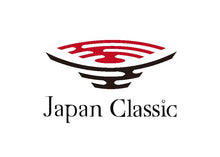【Japanese Pottery】Large Pit Kiln (Ōgama): Evolution, Structure & Unique Firing Dynamics
About the Author
Hayato Eihara
I am a Japanese resident living in Japan!
With years of experience, I share in-depth and detailed information about Japan with the world.
As part of my mission to promote Japanese culture, I also run Japan Classic, an online shop specializing in unique, high-quality tableware. If you're interested, feel free to check it out!
Table of Contents
- 1. Large Kiln (Ōgama), Late 15th Century–Present: Horizontal Flame Style (Semi‑Inverted Flame Style)
- 2. Meaning of “Ō” in Ōgama (Large Kiln)
1. Large Kiln (Ōgama), Late 15th Century–Present: Horizontal Flame Style (Semi‑Inverted Flame Style)
The large kiln (大窯) emerged as the mainstream kiln from the Muromachi through Azuchi–Momoyama periods, representing a single‑chamber, semi‑subterranean design between the earlier pit kiln (穴窯) and the later multi‑chamber noborigama (登窯). Some potters continue to use large kilns today.
Unlike earlier pit kilns—which were often entirely underground—the large kiln evolved from semi‑subterranean designs by adding numerous smoke‑splitting columns (分煙柱) within its firing chamber. From the firebox (焚口), flame heat is first divided by a primary smoke‑splitting column, then further split into multiple streams by secondary columns. These separated flames rise over stepped shelves in front of the ware, strike the ceiling, and descend back toward the floor, ensuring even heat distribution across the wide firing chamber.
Depending on kiln size, three to ten secondary smoke‑splitting columns may be present. Viewed from above, the floor plan clearly shows the arrangement of primary and secondary columns, which broaden the firing chamber and intensify flame length and velocity as heat is forced through narrow gaps under pressure.
The kiln’s shape features a broad firing chamber that tapers toward the flue, similar to semi‑subterranean pit kilns, but distinguished by its expanded chamber width—enabled by the multiple smoke‑splitting columns—that accommodates larger volumes of work with efficient, uniform firing.
2. Meaning of “Ō” in Ōgama (Large Kiln)
The term “Ō” (大) in Ōgama carries both the sense of “original” or “authentic” and simply “large.” When noborigama (登窯) technology was introduced from Karatsu to Moto‑yashiki in Mino at the start of the Edo period, the new multi‑chamber kiln was called “small kiln” (小窯), while the existing pit kiln became known as “large kiln” (大窯).
Not all Ōgama are physically large—many measure roughly the same as traditional pit kilns (about 2 m wide and 3 m long). However, some examples far exceed these dimensions. In Toki City, Gifu Prefecture, Moto‑yashiki’s East No. 2 kiln spans 3.9 m in chamber width and 7.5 m in total length, classifying it as a large kiln. The South Ōgama site in Bizen City, Okayama Prefecture, stretches roughly 50 m, and ceramic artist Moritōgaku recreated an Ōgama over 80 m long—whose inaugural firing took place in January 2015.
Performance‑wise, Ōgama generally mirror pit kilns but achieve higher firing efficiency through flame diffusion and pressurization via multiple secondary smoke‑splitting columns. Nonetheless, the superior fuel economy, stability, and efficiency of noborigama led to a rapid decline in Ōgama usage once that technology spread.
Large Ōgama demand immense fuel and firing durations measured in months, making them extraordinary undertakings even among traditional kiln types.
Brighten Up Your Table.
We deliver vibrant, high-quality pieces directly from Japan to add color and elegance to your dining experience.







Leave a comment